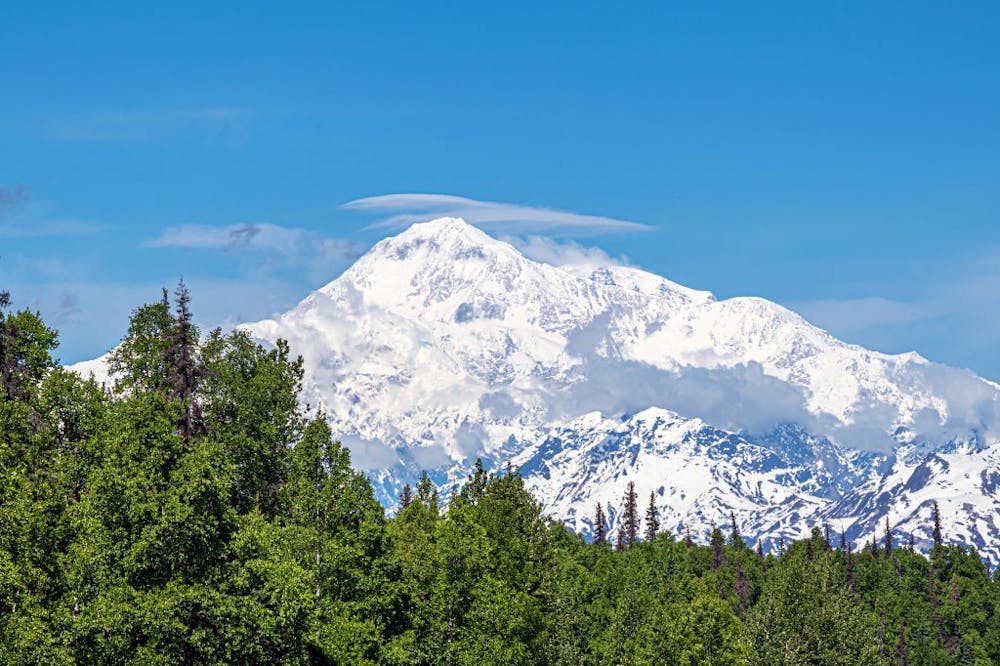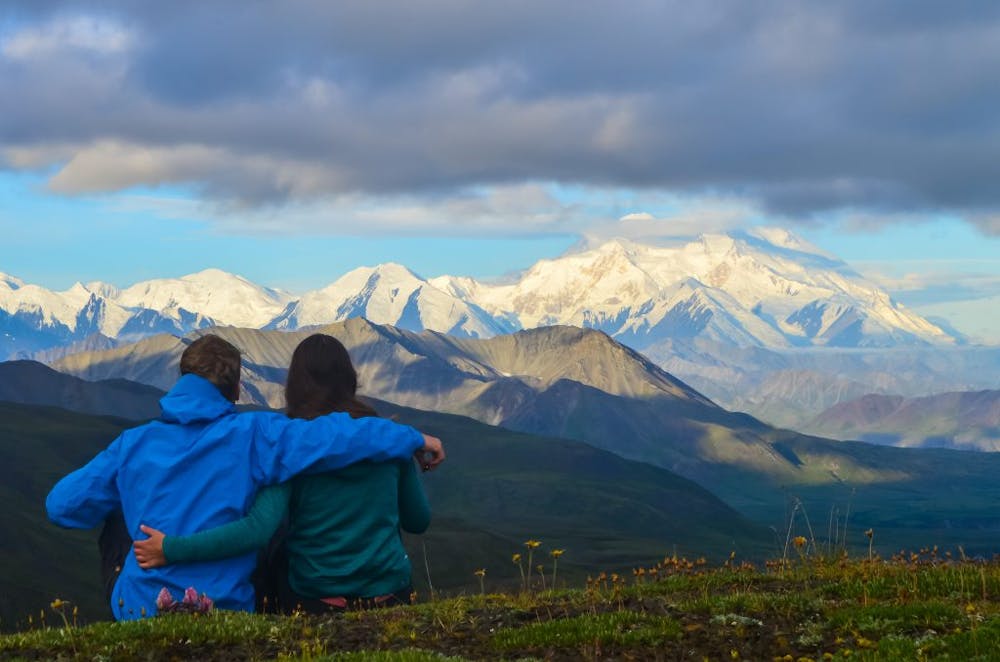The History of Denali
Denali, formerly known as Mount McKinley and still commonly referred to by that name, is the tallest mountain in North America, its summit standing 20,310 feet above sea level. Its status as the tallest mountain in the U.S. has made it a popular tourist attraction for decades. While summiting Denali is a serious challenge only attempted by experienced climbers, the Denali National Park and Preserve offers many other attractions for every type of tourist.
Denali has held a special significance for Alaskans, both native and settler, for generations, and its beauty and height have captured the attention of people around the world. Read on to learn about the history of Denali.
The History of Denali

It is believed that the Koyukon Athabaskan tribe were the first Native Americans to reach the flanks of Denali; though it is possible that Native Alaskans interacted with the mountain much earlier, there is no conclusive proof. The name “Denali” is derived from the Koyukon language and means “tall.” During the period in which Alaska was colonized by Russia, the Russians referred to the mountain as “Bolshaya Gora,” meaning “big mountain.”
The first European believed to have sighted Denali was British explorer George Vancouver. While conducting an expedition in the Cook Inlet in 1794, he wrote of “distant stupendous mountains” visible to the north. In 1844, the Russian explorer Lavrenty Zagoskin, while conducting an expedition of the Tanana and Kuskokwim Rivers, sighted Denali from its northern side, the first European to do so.
Interest in the mountain remained low for the next few decades until William Dickey, a Seattle gold prospector, explored the Denali region in 1897 while panning for gold in the Susitna River. Dickey wrote an article for the New York Sun that caused a stir when he declared the mountain to be the tallest in North America. At the time, Mount Logan in Yukon was considered to be North America’s highest point, and later surveyors would confirm Dickey’s assertion.
The first recorded exploration of the mountain was conducted by Alfred Brooks in 1902. A scientist who was attached to a surveying party of the U.S. Geological Survey, Brooks and his compadres attempted to climb to 10,000 feet up Denali, but were halted at 7,500 feet by impassable ice. After returning, Brooks and topographer D.L. Raeburn co-authored an article for National Geographic titled “Plan for Climbing Mount McKinley,” in which they asserted that future summiting attempts should approach from the north instead of the south. The article was extremely popular and served as a roadmap for future climbers.
In 1903, James Wickersham, a judge who lived in Eagle, embarked on the first recorded attempt to summit Denali. Wickersham and his party traveled to the mountain via the Kantishna River with the assistance of Tanana Athabaskan Indians who lived in the area. The party made base camp at Peters Glacier and successfully climbed to 10,000 feet before discovering that their route would not work; the path they followed was separated by an impassable precipice. A vertical wall in this area is named the Wickersham Wall in honor of James Wickersham, and due to the risk of avalanches, the route he took was not climbed successfully until 1963.
Later in 1903, Dr. Frederick Cook, an explorer who had taken part in Arctic expeditions led by Robert Peary and Roald Amundsen, led a party in another summiting attempt. Cook’s party ascended the mountain via Peters Glacier and reached a height of 10,900 feet before arriving at a dead end. While descending, Cook’s group circumnavigated Denali, becoming the first humans to do so.
Cook would launch another summiting expedition in 1906, this time ascending via Tokositna Glacier, located 25 miles from Denali, but were unable to make much progress before summer ended. In September of that year, Cook made a final attempt to summit the mountain with one other party member and claimed to have succeeded by taking a route from Ruth Glacier. Two other party members were suspicious of this, and by 1909, Cook’s climbing partner Robert Barrill had recanted part of his story about the climb. Cook would continue to assert that he had summited Denali until his death, but in 1998, a historian discovered an original and uncropped version of the photograph Cook used to prove he had reached the summit, proving once and for all that he had lied.
In 1910, a group of four locals known as the Sourdough Expedition attempted to summit Denali despite lacking any climbing experience. They spent roughly three month on the mountain and succeeded in reaching the North Summit, the lower of Denali’s two summits, erecting a pole near the top. However, their claim was initially disbelieved because they had also claimed to have climbed the South Summit as well. In 1912, an expedition led by Herschel Parker and Belmore Brown, two former associates of Frederick Cook’s, came within several hundred yards of reaching Denali’s summit before turning back due to poor weather.
The first confirmed ascent of Denali’s summit was in 1913 by a party led by climbers Hudson Stuck and Harry Karstens; the first man in their party to reach the summit was Alaska Native Walter Harper. This party traveled to the summit via Muldrow Glacier, a route still commonly used by climbers today. Stuck observed a pole near the North Summit while ascending; this confirmed that the Sourdough Expedition had indeed made it there.
Denali’s name has been the subject of controversy. In 1896, the mountain was named Mount McKinley by a local gold prospector as a show of support for William McKinley, who would be elected president that year. In 1917, President Woodrow Wilson signed the Mount McKinley National Park Act into law, formally recognizing the name Mount McKinley. However, many Alaskans continued to refer to the mountain as Denali, and in 1975, the Alaska Board of Geographic Names changed the mountain’s name back to Denali. In 2015, President Barack Obama officially changed the mountain’s official name to Denali.
Today, Denali remains one of Alaska’s top tourist draws due to its height and beauty. Many climbers attempt to summit the mountain; however, doing so is dangerous and requires an official permit. As of 2003, 100 climbers have died attempting to summit Denali. The mountain is listed as one of the Seven Summits, a group of exceptionally-challenging-to-climb mountains that includes Mount Everest. Denali National Park and Preserve also hosts a number of other attractions beyond summiting the mountain.
Conclusion

Denali’s gorgeousness and uniqueness make it a must-visit location on your Alaska trip and one of the most important mountains in North America. As the tallest mountain in the U.S. or Canada, Denali occupies a central place in North American culture, and its majesty has acted as a source of inspiration for people the world over. Even if you are not interested in climbing, visiting Denali and enjoying its many tourist attractions is an experience you will never forget.
